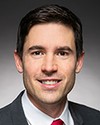We do a lot of work in mitigation, especially when it comes to wildfires. We have on-reserve fuel funding grants that communities are able to apply for, but it's only a maximum of $75,000 if they prove that they are high risk.
What we're finding is that, through each of the communities we deal with through their community wildfire protection plans, if they have one in place already, it's out of date by seven, eight or 12 years. Doing those, you need a registered forestry professional to go in and physically walk through each community, through the exterior of it, and determine what hazard level it is based on their findings: how deep the duff layer is, what types of trees are there, what type of vegetation there is and how healthy it is. All of those factors determine how high risk that community is.
When it comes to what supports can be improved, there is the increase in funding that these communities can apply for to be able to get this work done. As an example, just updating a community wildfire protection plan with a registered forestry professional is based on the amount of hectares that person does. I just did it this last year with two of my four communities. I can only afford to do two with the Nisga’a nation where I work. That work cost me $47,000 for this RPF to come through and determine exactly what we knew, but we had to get an RPF stamp of approval on it—that we are high risk in those two communities.
Following that, we needed to apply for fuel treatment. FNESS does a lot of that fuel treatment work and can coordinate with communities on how to get it done. They do lots of training and have the capacity in some instances to be able to go to the community and conduct that work, but it does cost a lot of money. It's about $2,000 per hectare, give or take, in the Okanagan, and about $8,000 per hectare in the northwest, where I live. This is because if you live in the Okanagan you drive through and you can see the ground everywhere you go. There are trees maybe six to 10 metres apart on a regular basis. Whereas where I live in the northwest, just about an hour north of Terrace, I have to walk sideways through the trees. I have to crawl and climb over. As an example, the work that we did for eight square hectares took five months of work for 20 guys.
It varies in the amount of time and the amount of funds it takes for each of these areas, and I'm not even talking about the northeast. I'm not talking about the Vancouver area or the central interior of British Columbia where all these topographies are very different. There are some areas that are completely flat or with rolling hills. We have mountains shooting out of the lakes and rivers where we live, where we have an 80% incline to get to the top and we're supposed to clear as the raven flies, like flat on a map, a certain amount of area.
It's very difficult to say what Canada can do in partnership with FNESS, but that hopefully gives you a little bit of insight into the issues and the various types of issues. To be able to answer that question thoroughly requires a little more technical explanation that we probably don't have time for here.
However, there is increased funding for these areas that FNESS has already established, such as the on-reserve fuel funding or the community resiliency investment grant and things like that, to be able to conduct large-scale work over multiple years instead of reapplying once a year, year after year, because grants themselves are very incumbent on the people who apply for them. It requires a lot of reporting throughout, and especially in the final reporting a lot of labour-intensive coordination in all the documents and photographs and GPS, spatial data and things like this, to be able to prove that we did work there.
Hopefully that answers your question. I tried to break it down as easily as I could.





